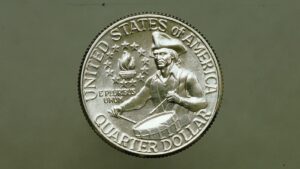Introduction:
Bicentennial coins, especially those with historical significance like pennies, are prized possessions for collectors and history enthusiasts alike. Cleaning these coins can be a delicate process, as improper methods can diminish their value and historical charm. In this guide, we’ll explore the art of cleaning rare Bicentennial coins responsibly to help you maintain their beauty and historical integrity.
- Understand the Value:
Before you embark on the cleaning journey, it’s crucial to assess the value of your Bicentennial coins. Consult numismatic experts or use reputable online resources to determine the rarity and historical significance of your coins. If your coins are particularly valuable, you might want to reconsider cleaning them at all, as collectors often prefer the natural patina and wear that comes with age.
- Gather Your Supplies:
Cleaning rare coins requires a gentle touch and the right tools. Here are some essential supplies you’ll need:
a. Soft-bristle toothbrush or horsehair brush b. Mild dish soap c. Distilled water d. Microfiber cloth or lint-free cotton cloth e. Plastic or latex gloves f. Toothpicks or cotton swabs
- Preparing the Cleaning Solution:
Create a mild cleaning solution by mixing a small amount of dish soap with distilled water. Avoid using abrasive or acidic cleaners, as they can damage the coin’s surface. The goal is to remove dirt and debris without altering the coin’s appearance or patina.
- Handle Coins with Care:
Wear plastic or latex gloves to prevent oils and dirt from your hands transferring onto the coins. Hold coins by the edges, minimizing direct contact with the surfaces. Any fingerprints or smudges left on the coin can affect its overall appearance and value.
- Gentle Cleaning Technique:
Dip the soft-bristle toothbrush or horsehair brush into the cleaning solution, and gently brush the surface of the coin. Use light, circular motions to dislodge dirt and grime. For stubborn spots, use a toothpick or cotton swab dipped in the cleaning solution.
- Rinse and Dry:
After cleaning, rinse the coins in distilled water to remove any soap residue. Pat them dry with a microfiber or lint-free cotton cloth. Air-drying is also an option, but make sure the coins are placed on a soft surface to prevent scratches.
- Leave Some Patina Intact:
It’s essential to strike a balance between cleanliness and preserving the coin’s patina. Some collectors prefer a slightly worn appearance, as it adds to the coin’s authenticity and historical character.
Conclusion:
Cleaning rare Bicentennial coins requires a delicate touch and a commitment to preserving their historical value. By following these guidelines, you can enhance the appearance of your coins while maintaining their intrinsic worth and historical allure. Always exercise caution, and when in doubt, seek advice from numismatic experts before attempting any cleaning methods. Remember, these coins are not just currency – they are tangible pieces of history deserving of our utmost care and respect.



